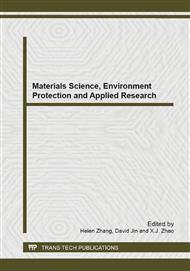p.517
p.521
p.526
p.531
p.535
p.539
p.543
p.547
p.551
Applied-Information Technology in Supply Chain Knowledge Collaborative Model Based on Semantic Web Service
Abstract:
In order to improve applied-information technology in supply chain collaborative system, it proposes a method of supply chain knowledge collaboration based on semantic Web service. Specific research process is as follows. Firstly, the Web knowledge service ontology based on OWL-S supply chain is introduced, and then analyzed the semantic Web service in the supply chain, three different type models of supply chain knowledge collaboration are also proposed from the standpoint of knowledge system construction, finally, the system structure of supply chain knowledge collaboration based on ontology is designed. The results show that using the model paper mentioned can improve the overall system performance of applied-information technology efficiently.
Info:
Periodical:
Pages:
535-538
Citation:
Online since:
March 2014
Authors:
Price:
Сopyright:
© 2014 Trans Tech Publications Ltd. All Rights Reserved
Share:
Citation:


